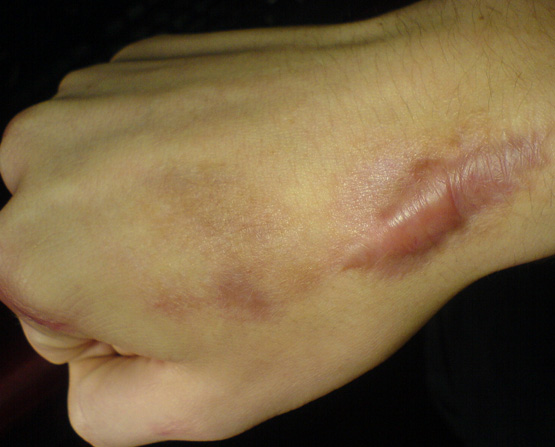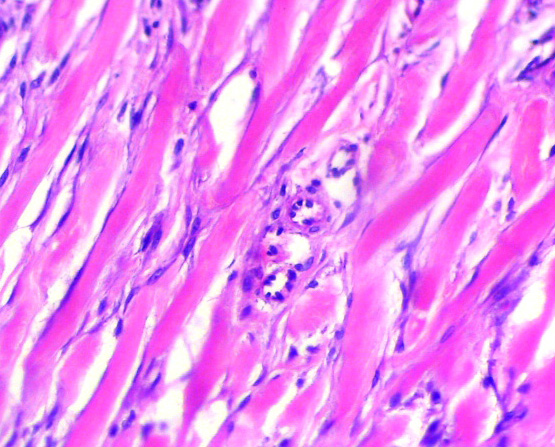KELOIDS
Keloids are raised, reddish nodules that develop at the site of an injury. After a wound has occurred to the skin both skin cells and connective tissue cells (fibroblasts) begin multiplying to repair the damage. A scar is made up of 'connective tissue', gristle-like fibers deposited in the skin by the fibroblasts to hold the wound closed. With keloids, the fibroblasts continue to multiply even after the wound is filled in. Thus keloids project above the surface of the skin and form large mounds of scar tissue.
Keloids may form on any part of the body, although the upper chest, shoulders and upper back are especially prone to keloid formation. Symptoms include pigmentation of the skin, itchiness, redness, unusual sensations and pain.
It is estimated that keloids occur in about 10% of people. While most people never form keloids, others develop them after minor injuries, even insect bites or pimples. Darkly pigmented people seem to be more prone to forming keloids. Men and women are equally affected.
For more information on other diseases that can be treated with Topical Verapamil, follow the links for each disease.
KELOIDS
Keloids are raised, reddish nodules that develop at the site of an injury. After a wound has occurred to the skin both skin cells and connective tissue cells (fibroblasts) begin multiplying to repair the damage.
LEDDERHOSE
Ledderhose Disease Disorder of unknown etiology characterised by local proliferation of abnormal fibrous tissue in the plantar fascia. This tissue is locally aggressive and progressively replaces the normal plantar aponeurosis.
PEYRONIE'S DISEASE
Peyronie's Disease is a curvature, lump or hard area observed in the penis. Painful erections and penile pain are also symptoms of this condition.
TRIGGER FINGER
Trigger Finger is caused by a thickening on the tendon catching as it runs in and out of the sheath. The most common cause is tenosynovitis.
DUPUYTREN'S CONTRACTURE
Dupuytren's Contracture is a thickening of deep tissue (fascia) which passes from the palm into the fingers. Shortening of this tissue causes "bands" which pull the fingers into the palm.
FROZEN SHOULDER
Frozen Shoulder is shoulder joint that is significantly limited in its range of motion in all directions. The range of motion is limited not only when the patient attempts motion, but also when the doctor attempts to move the joint fully while the patient relaxes.
HYPERTROPHIC SCAR
Hypertrophic Scar looks similar to a keloid. Hypertrophic scars are more common. They don't get a big as keloids, and may fade with time. They occur in all racial groups.
Learn more about Keloids, treatments, Topical Verapamil, and related diseases.

KELOIDS

ADDRESS
2950 Thousand Oaks Dr., Suite 25, SA, TX
CALL US
1-800-250-6232

